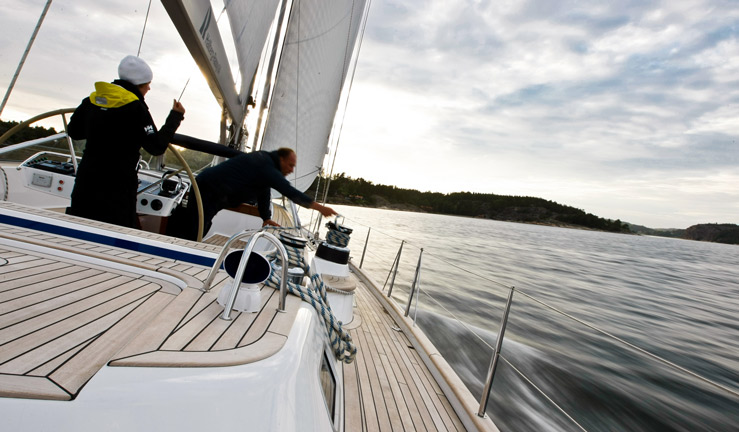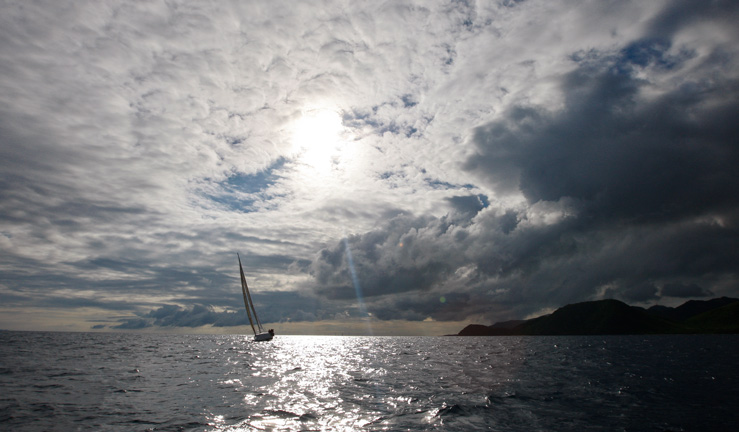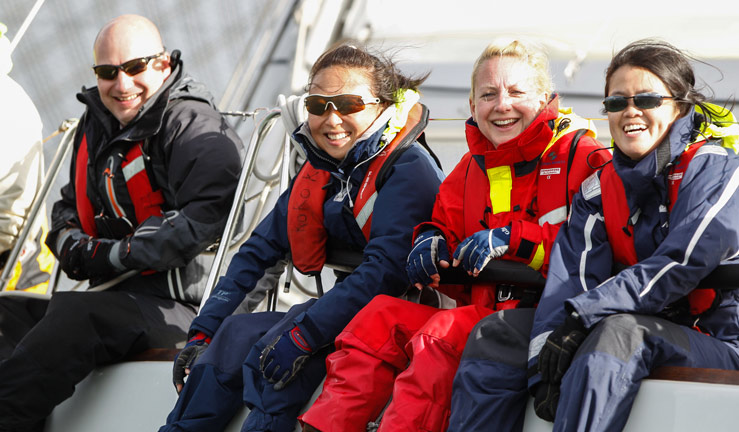Winter on the water
Clothing, safety and top tips to enjoy your boat all year round - even in the colder months

With quiet waters, low sun and frost covered landscapes, a winter day on the water can be beautiful.
But even so, cold temperatures can easily persuade us to stay on dry land.
With the right preparation, boating in these colder months is magical. Here are some top tips to help you embrace adventure this winter…
Clothing to beat the chill
If you feel cold on shore, it feels even colder when you’re on the water so suitable sailing clothing and more of it than you think you need is essential.
You’ll want to be wearing plenty of base and mid layers so thermal trousers and thick fleeces which will help to trap warm air next to your skin.
Good quality outer layers and waterproofs will keep you dry and protect against cold weather, but remember to leave room for your layers beneath.
Gloves are needed, although you might want to be able to slip them on and off easily. You also can’t underestimate a good pair of socks (or two!) under your sailing boots.
Finally, a warm winter hat, neck and faceguards will protect against the wind. Pack your sunglasses to avoid a squint.
If you want to update your winter sailing wardrobe, RYA members enjoy exclusive discounts on quality sailing brands.
Is it safe to sail in winter?

Cruising in the winter doesn’t come without its risks.
Tidal open water is coldest during early spring and with temperatures consistently dropping hypothermia and cold water shock pose a greater threat. Therefore, suitable lifejackets and safety lines can help save lives.
If it’s below freezing, make sure all ice is removed from the decks before you cast off. Be wary of frozen rigging which can become dangerous, affecting your stability, and causing lines to jam. Pay extra attention to any slippery surfaces including pontoons.
Preparing for weather
With the unpredictability of winter weather, always be prepared. Double check the tides, forecasts, and keep an eye on sea conditions. With shorter days, you may find that shorter passages are preferable, or make sure you are prepared to be on the water when the daylight fades.
There’s also more chance of experiencing mist and fog. If you have a radar, make sure you know how to use it. The RYA offer a one-day radar course which can be taken either online or afloat.
If you don’t have a radar, consider purchasing one in the future and pay particular attention to visibility in the forecasts.
Equipment to keep my boat warm

If you want to extend your season, a reliable cabin heater will keep your boat damp free and above freezing.
Electric heaters, left on board during the winter or all year round can be an economical option. With adjustable thermostats, they can reduce the risk of any water freezing.
Diesel heaters are fitted permanently to your boat and can be used when underway. Be wary of any safety risks including exhaust either coming into the cabin or burning fenders and regularly test your CO alarm.
Avoid damp and mould smells with a dehumidifier. There’s a range of electric choices on the market with options to drain directly out of the boat and down a sink. You may also want to look at passive moisture traps for use in small areas such as cupboards and lockers.
Tips for a happy crew

Happy winter cruising requires a warm and energic crew. Keep food and hot drinks easily in reach- unlike the summer you won’t need to worry about a fridge!
Pre-made dishes that can be easily heated work well or a hot soup or warm drinks ready to go in thermos flasks.
Packing a hot water bottle will also work wonders for cold hands and feet.
Find out more…
So, this winter why not take advantage of those empty ports, spacious marinas, quiet and clean facilities and warm bars and restaurants. Find more information and advice to enjoy safe cruising.
Interested in taking a course this winter? Make the most of the quiet waters and browse RYA courses near you.
